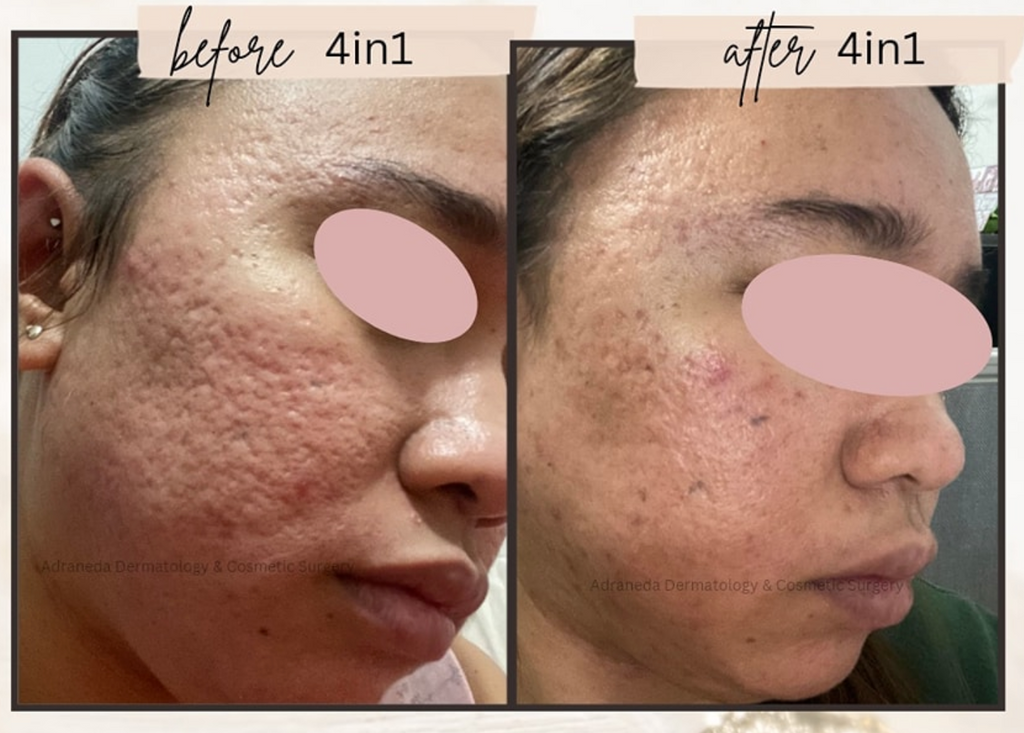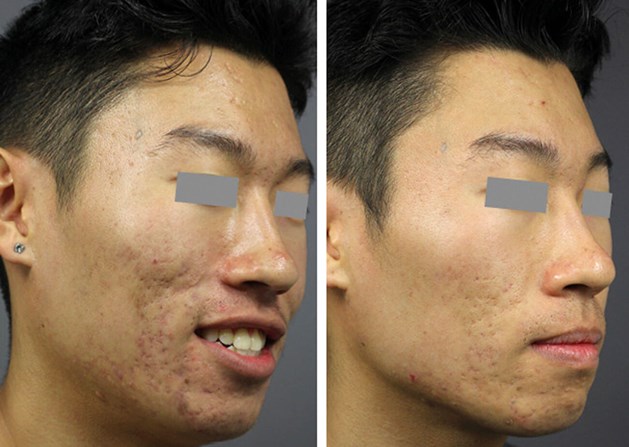Acne and Acne Scars Treatment: Change Your Skin with Proven Solutions
Acne and Acne Scars Treatment: Change Your Skin with Proven Solutions
Blog Article
A Comprehensive Overview to Handling Skin Disease: Focusing on the Treatment of Acne Marks
Acne scars represent a significant issue for numerous people, frequently impacting self-esteem and overall skin health. Understanding the various kinds of acne marks, such as atrophic and hypertrophic, is essential for efficient management and treatment.
Understanding Acne Marks
Recognizing acne scars entails identifying the intricate interaction between skin healing and the inflammatory procedures that happen during acne outbreaks. Acne creates when hair roots come to be blocked with oil, dead skin cells, and bacteria, leading to swelling. This inflammatory action is important for combating infection however can also result in damage to the skin's tissue.
When the body tries to heal itself, it produces collagen, a protein necessary for skin structure. The quantity and quality of this collagen can differ, leading to different kinds of scars. Variables influencing mark formation include the seriousness of the acne, individual skin kind, genetics, and the body's recovery response.
Furthermore, early intervention in acne treatment can play a pivotal role in preventing scarring. Prompt management of breakouts decreases swelling and cells damage, which are crucial consider scar growth. Education and learning on correct skin care and treatment options is essential for people vulnerable to scarring. Eventually, comprehending the underlying devices of acne and its healing procedure is essential for reliable administration and avoidance of acne scars.
Kinds Of Acne Marks
The intricacy of acne scars can be classified into several distinctive types, each mirroring the underlying skin damage and recovery reaction. One of the most typical types include atrophic marks, hypertrophic scars, and keloids.
These scars can additionally be classified right into icepick, boxcar, and rolling marks, each varying in shape and deepness. Icepick marks are narrow and deep, appearing like small punctures, while boxcar scars have a broader, extra angular appearance.
Hypertrophic scars, on the various other hand, are elevated and result from an overproduction of collagen during healing. These scars might differ in dimension and can in some cases discolor with time but may continue to be prominent.
Keloids are a more serious type of hypertrophic scarring, expanding past the original injury site and usually requiring much more hostile therapy alternatives. Recognizing these kinds is important for figuring out the most effective treatment method tailored to an individual's certain mark kind and skin problem.
Topical Therapies

Topical treatments play an essential role in managing acne marks, offering individuals a variety of options targeted at improving skin appearance and look. These therapies mostly concentrate on advertising skin regrowth, reducing coloring, and enhancing overall complexion.
One of the most extensively utilized topical agents is retinoids, which are by-products of vitamin A. Retinoids stimulate collagen production and accelerate cell turn over, helping to diminish the look of scars gradually. Furthermore, alpha hydroxy acids (AHAs) and beta hydroxy acids (BHAs) can exfoliate the skin, eliminating dead skin cells and promoting a smoother surface area.
Another reliable classification consists of topical antioxidants, such as vitamin C, which can help to lighten hyperpigmentation related to acne marks while providing anti-inflammatory advantages. Moreover, silicone gels and sheets have actually been shown to moisten and flatten marks, making them less noticeable.
Hydroquinone is frequently made use of for its skin-lightening residential properties, although it must be used carefully due to prospective side results. Integrating creams that contain components like hyaluronic acid can better sustain skin healing and improve structure. For optimal outcomes, it is advisable to seek advice from a dermatologist for customized treatment recommendations.

Professional Treatment Choices
When it concerns resolving extra extreme acne marks, people often transform to specialist therapy alternatives that can deliver more remarkable results than topical therapies alone. These interventions are typically administered by dermatologists or licensed professionals and consist of different approaches tailored to individual skin kinds and mark seriousness.
One of one of the most typical treatments is chemical peels, which make use of acids to promote and scrub the skin regrowth. This method can considerably reduce the look of surface marks. Microneedling, another reliable alternative, includes creating micro-injuries in the skin to boost collagen production, boosting structure and reducing scars.
Laser treatment is likewise extensively utilized, with fractional lasers specifically targeting marked regions while maintaining bordering skin. This method can generate exceptional improvements in skin look over numerous sessions. Furthermore, dermal fillers are utilized to restore quantity and smooth out unequal skin surface areas, providing instant, albeit short-lived, outcomes.
Lifestyle and Home Solutions
Integrating lifestyle adjustments and natural remedy can play a substantial role in managing acne marks, complementing expert therapies. Keeping a well balanced diet abundant in vitamins, anti-oxidants, and minerals can facilitate skin healing - acne treatment for sensitive skin. Foods high in vitamin C, such as citrus fruits, and those having zinc, like nuts and seeds, promote skin regrowth and aid minimize inflammation
Hydration is likewise crucial; alcohol consumption ample water keeps the reference skin hydrated, aiding in its natural repair service procedures. Regular workout improves blood circulation, which can improve nutrient shipment to the skin and boost total complexion.
Along with dietary modifications, integrating topical home treatments can be useful. Natural components such as aloe honey, tea, and vera tree oil have anti-bacterial and anti-inflammatory residential properties, which might aid in lowering the appearance of marks. Scrubing the skin with mild scrubs can additionally advertise cell turn over, helping in the fading of marks gradually.
Additionally, developing a regular skin care regimen that includes sun protection is vital, as UV exposure can dim marks. By integrating these way of living alterations and natural home remedy, people can improve their skin's healing procedure and attain a much more even skin tone.
Conclusion
Effective management of acne marks necessitates a comprehensive understanding of useful link their kinds and the underlying systems included in mark development. A mix of topical therapies, expert therapies, and way of life modifications can substantially improve skin healing and minimize mark visibility.
Recognizing acne marks entails recognizing the intricate interaction in between skin recovery and the inflammatory processes that take place during acne break outs. Elements affecting scar development consist of the go to website extent of the acne, individual skin type, genes, and the body's recovery action.
These marks can additionally be classified right into icepick, boxcar, and rolling marks, each differing in shape and depth. Icepick marks are slim and deep, appearing like tiny leaks, while boxcar marks have a wider, extra angular look (acne treatment for sensitive skin).Efficient management of acne scars demands an extensive understanding of their kinds and the hidden devices included in scar development
Report this page